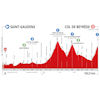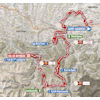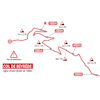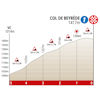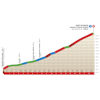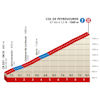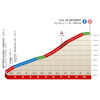The first part of the route is nothing to worry about. The riders pedal on undulating terrain towards the Cap de la Serre, a warm-up climb of 1.2 kilometres at 5.6%. The riders are about halfway when the course starts to show its teeth. This is exactly the part of the route that will return on the Tour de France.
The Port de Balès begins in Mauléon-Barousse with 1 kilometre at 8% before continuing on a more friendly note with very shallow gradients. But from the tenth kilometre onwards the Port de Balès is remorseless with 3 kilometres at around 10%. All in all, the climb adds up to 19.1 kilometres and the average gradient sits at 6.1%.
The descent of the Port de Balès leads straight onto the Col de Peyresourde, which is a much more steady climb. The Peyresourde is 9.7 kilometres long and slopes at 7.5%.
A sharp downhill leads into Loudenvielle, finish place of stage 8 in the Tour de France. But the Route d’Occitanie continues false flat down to the foot of the Col de Beyrède.
The finish climb is a tough test of 10.9 kilometres with an average gradient of 7.2%. The fourth kilometre before the line is especially steep with an angle of 13% and ramps up to 17%. The Beyrède continues to climb stiffly for 2 more kilometres before the inclination evens out after the flamme rouge.
The intermediate sprints – at kilometre 35 and kilometre 130 – come with 3, 2 and 1 seconds each, while time bonuses of 10, 6 and 4 seconds are awarded to the first three riders on the line.
Another interesting read: results 3rd stage 2020 Route d’Occitanie.
Route d’Occitanie 2020 stage 3: routes, profiles
Click on the images to zoom
